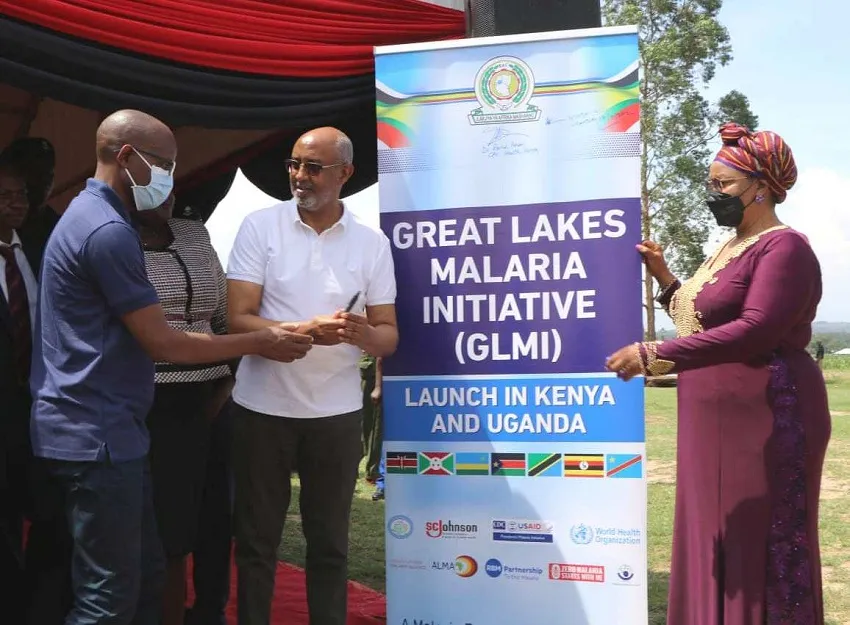Amref Health Africa Makes Great Steps to end TB
Thursday, 23 February, 2017
Tuberculosis (TB) remains a public health challenge in developing countries. Worldwide in 2014, World Health Organization (WHO) estimated that 9 million people developed TB with Kenya contributing about 89,000 TB cases. Kenya is ranked 15th among the 22 high TB burden countries making the risk of infection transmission high. WHO estimates that 20% of annual estimates are still not being notified. Some of those missed are those who present to private providers and somehow diagnosis is missed.
With the focus in post 2015 Global TB strategy aiming to reduce new TB infections and deaths by 90% and to cut new cases by 95% respectively by 2035, Kenya has developed a new National Strategic Plan (2015 to 2018) with a vision of reduce the burden of lung disease in Kenya and render Kenya free of TB and leprosy.
TB transmission is a public health concern. It is a disease caused by bacteria, which can attack any part of the body except the hair and nails and is spread by one person to another through the air when an infected person coughs, laughs or sings. It affects people from various backgrounds, age groups and cultures. It is therefore important to raise awareness on TB as we gear up for the World TB Day.
Amref Health Africa is committed to improving the health of people in Africa by partnering and empowering communities, and health systems to achieve its vision of lasting health change within African communities. Amref Health Africa Kenya is recognized as a major partner in TB control within Kenya and in Africa. On this day of the 24 March, 2016 Amref Health Africa joins the rest of the world in celebrating and marking the world TB day under the theme Unite to end TB.
In Kenya, Amref Health Africa is the second time non state Principal Recipient (PR) for the Global Fund’s TB grant currently implementing the New Funding Model (NFM). Working closely with the National TB Program, Kenya Coordinating Mechanism and TB Inter Agency Committee, Amref Health Africa has partnered with 29 Sub Recipients to implement activities under NFM with a budget of USD 22 million in 2 years. These Sub Recipients include Community Based Organisations, Non-Governmental Organisations, Faith Based Organisations, Networks and Professional Associations.
The NFM will support community TB care activities where training of Community Health Volunteer’s (CHVs) will be carried out. Once the CHVs are trained they will then carry out different community activities including home visits for health education for the TB patients and tracing of defaulters. The CHVs will also screen contacts of bacteriologically confirmed TB patients and refer those who are symptomatic for TB diagnosis at health facilities.
The NFM will support community TB care activities where training of Community Health Volunteer’s (CHVs) will be carried out. Once the CHVs are trained they will then carry out different community activities including home visits for health education for the TB patients and tracing of defaulters. The CHVs will also screen contacts of bacteriologically confirmed TB patients and refer those who are symptomatic for TB diagnosis at health facilities.
Health Care Workers will also be trained on management of nutrition among TB patients. Operation research mentorship for the program officers who have been trained on operation research will be supported so that they can carry out research. It is anticipated that the evidence generated will inform policy and programing. 15 selected laboratories will be renovated and about 24 strengthened on Lab Information Management Systems to ensure improved data management in these facilities.
Amref Health Africa is also in the process of procuring GeneXpert machines, which are testing device that detects the presence of TB and further test drug resistance and commodities on behalf of the Kenya government to support use of new and rapid TB diagnosis. Compared to other methods of testing, the GeneXpert has revolutionized how quick testing is done, not days, not months but HOURS. It takes a maximum of two hours to generate results and thus fast, efficient and spare the patient the agony of having to wait long before getting his/her results and and start treatment.







